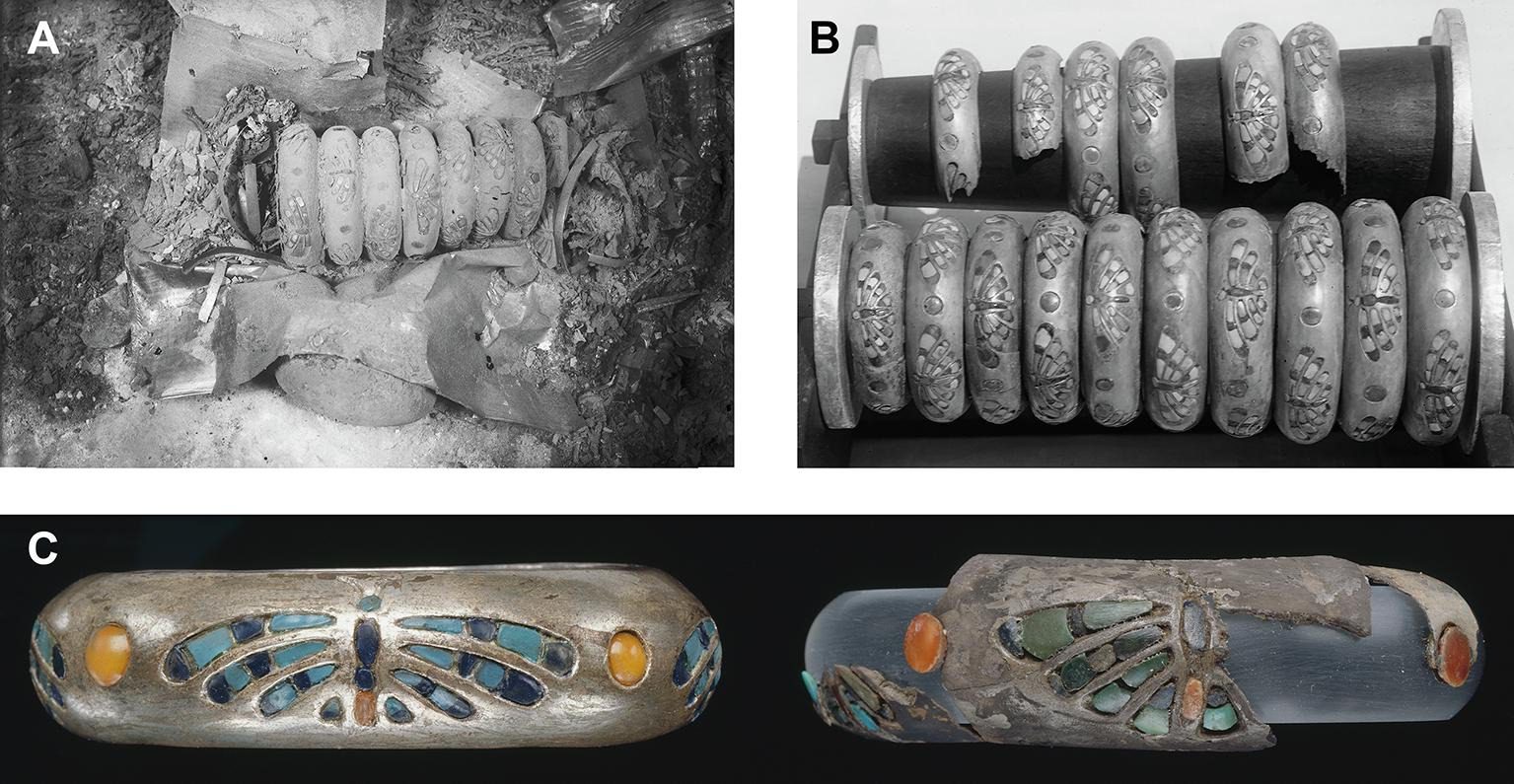Sometimes in science, a breakthrough comes not with some new discovery, but with the re-examination of something we’ve had under our noses for decades. Take, for example, a new analysis of the jewelry collection of Hetepheres I, a queen of Egypt more than 4,500 years ago – research that has revealed a century-old museum display to in fact be some of the earliest evidence for long-distance trade in the ancient world.
“The origin of silver used for artefacts during the third millennium [BCE] has remained a mystery until now,” said Karin Sowada, researcher at the Department of History and Archaeology at Macquarie University and co-author of the new analysis, in a statement.
“This new finding demonstrates, for the first time, the potential geographical extent of trade networks used by the Egyptian state during the early Old Kingdom at the height of the Pyramid-building age.”
As wife of the Fourth Dynasty pharaoh Sneferu, mother of Khufu – you may know him as the guy responsible for the Great Pyramid of Giza – and carrying a bloodline that united two royal dynasties, Hetepheres was one of Ancient Egypt’s most important queens.
And in Ancient Egypt, that meant that her burial had to be appropriately flashy. Discovered almost by accident by a photographer in 1925, her tomb is “the richest known from the period,” the researchers note, “with many treasures including gilded furniture, gold vessels and jewellery” to see her into the afterlife in style.
It’s one of the more iconic of these finds that is making headlines once again: the collection of 20 silver deben-rings, or bracelets, which – with the exception of a brief analysis back in 1928 – have spent the majority of the past century simply languishing in museums around the world.

(A) Bracelets in the burial chamber of Tomb G 7000X as discovered by George Reisner in 1925 (Photographer: Mustapha Abu el-Hamd, August 25 1926) (B) Bracelets in restored frame, Cairo JE 53271–3 (Photographer: Mohammedani Ibrahim, August 11 1929) (C) A bracelet (right) in the Museum of Fine Arts, Boston, MFA 47.1700. The bracelet on the left is an electrotype reproduction made in 1947, MFA 52.1837
But while precise details on the pieces may have been scant, there were already hints that the jewelry may have been the result of long-distance trade between ancient kingdoms. Being more than 90 percent silver, the material for the bracelets was unlikely to have come from Egypt – while the country was rich in gold, there were no local sources for nature’s runner-up metal, meaning it was likely imported from mines in the Cyclades islands of Greece.
And yet the construction is inimitably Egyptian, the researchers explain. “The bracelets, made of a metal rare to Egypt, are a statement of royal privilege and taste,” they write. “The thin metal worked into a crescent shape and the use of turquoise, lapis lazuli and carnelian inlay, stylistically mark the bracelets as made in Egypt and not elsewhere.”
Combined, this makes the bracelets of Hetepheres the oldest known evidence of long-distance trade between Egypt and Greece, say the team.
“This kind of ancient trading network helps us to understand the beginnings of the globalised world,” Sowada told ABC News. “For me that’s a very unexpected finding in this particular discovery.”
Not only does the new analysis rewrite the history of ancient international trade, it’s also provided eye-opening new evidence on early Egyptian silver working.
“[T]he bracelets were made by hammering cold-worked metal with frequent annealing to prevent breakage,” explained Damian Gore, a professor in Macquarie University’s School of Natural Sciences and co-author of the analysis.
“The bracelets were also likely to have been alloyed with gold to improve their appearance and ability to be shaped during manufacture,” he added.
While the links between Ancient Egypt and the surrounding kingdoms have been known for centuries – after all, the entire Ptolemaic Dynasty was Greek rather than home-grown – the silver in Hetepheres’s bracelets predates most previous evidence for these international connections by a good few centuries.
“In the Middle Kingdom and the New Kingdom much, much later, we have lots of papyrus that contain administrative records, trade records and so forth,” Brent Davis, a senior lecturer in archaeology at the University of Melbourne, told ABC.
“But for the Old Kingdom, it’s just too long ago, those documents for the most part haven’t survived.”
That makes the bracelets, and the new analysis of their composition, incredibly valuable – not only shedding new light on the ancient world, but also highlighting just how much we still have to discover.
“This is the start of a line of research that has got a long way to go,” Sowada told ABC.
“These networks wouldn’t have happened overnight,” she added. “They would have been built over a long period of time and these bracelets are a window into that wider network.”
The study is published in the Journal of Archaeological Science: Reports.
Source Link: Jewelry Fit For A Pharaoh Reveals Previously Unknown Ancient International Trade Routes